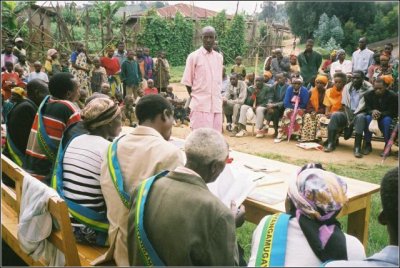Three decades after the 1994 Genocide against the Tutsi, Rwanda’s path to reconciliation continues to stand as a powerful example of resilience, healing, and transformation, says Jean-Damascène Bizimana, Minister of National Unity and Civic Education.
The genocide, which lasted 100 days between April and July 1994, resulted in the death of over one million people in a carefully orchestrated plan of mass killings.
Despite the deep wounds left by this tragic event, Rwanda has made tremendous strides in rebuilding both its society and economy, largely attributed to the leadership of President Paul Kagame. Bizimana highlighted that the reconciliation rate among Rwandans has reached 94%, which he credited to the country’s strong governance and leadership.
Over the past decade, Rwanda’s unity and reconciliation index has significantly improved, rising from 82.3% to 94.7%.
Gacaca Courts: Community-Based Justice
One of the key initiatives that contributed to this progress was the Gacaca court system. These community-driven courts were established to address the massive number of genocide-related crimes. Unlike formal judicial proceedings, Gacaca encouraged community participation, allowing perpetrators to confess, seek forgiveness, and make reparations.
The Gacaca courts officially ended in 2012, after handling over 1.9 million cases in ten years. This approach helped restore trust within communities and promoted accountability and healing. Bizimana noted that 40% of Gacaca archives have been indexed as part of efforts to preserve Rwanda’s history and counter genocide denial.
Reconciliation Villages: Living Together, Healing Together
Reconciliation villages have also played a vital role in fostering unity after the genocide. These villages aim to integrate survivors and perpetrators who have reconciled, encouraging peaceful coexistence and open dialogue.
Established as part of a national recovery strategy, these communities allow individuals—often from the same areas—to live side by side, rebuild their lives, and heal together. Bizimana emphasized that while the government continues to provide housing for vulnerable genocide survivors, they are also encouraged to live alongside other disadvantaged groups in model villages.
Reintegrating Genocide Convicts
Rwanda is preparing to roll out the Itorero program—a traditional civic education initiative—for genocide convicts nearing the end of their prison terms. According to Bizimana, this program will support the social reintegration of those convicts, with over 60,000 individuals already reintegrated.
He noted that around 20,000 genocide convicts are still serving their sentences, and the Itorero sessions will be held quarterly based on the number of people set for release. These reintegration efforts are seen as essential to strengthening reconciliation and social harmony.
Ndi Umunyarwanda: A Foundation of National Identity
Launched in 2013, the Ndi Umunyarwanda (“I am Rwandan”) initiative aims to build a unified national identity rooted in trust and unity. The program has been instrumental in advancing reconciliation and fostering a sense of shared belonging among Rwandans.
Social, Psychological, and Economic Recovery
Alongside reconciliation and psychological healing, Rwanda has made notable progress in rebuilding its economy. Economic growth has improved living conditions and created a sense of shared prosperity, helping to reduce lingering divisions.
The government has invested in infrastructure, education, healthcare, and technology—providing opportunities for citizens to improve their lives. Between 1998 and 2020, 29,015 houses were built for vulnerable genocide survivors, and 4,050 homes were renovated. Additionally, 54,680 people received financial support for income-generating activities, and 7,510 cows were distributed through the Girinka (One Cow per Poor Family) program, according to data from MINUBUMWE.
In education, support was extended to 107,921 students to complete secondary school, while 33,349 students were funded to pursue university and other higher education opportunities by 2020.
In healthcare, 2,618,366 medical consultations were recorded for survivors, and 499 individuals were sent abroad for specialized treatment.
Altogether, these social and economic recovery programs have cost the government approximately Rwf 333 billion.


